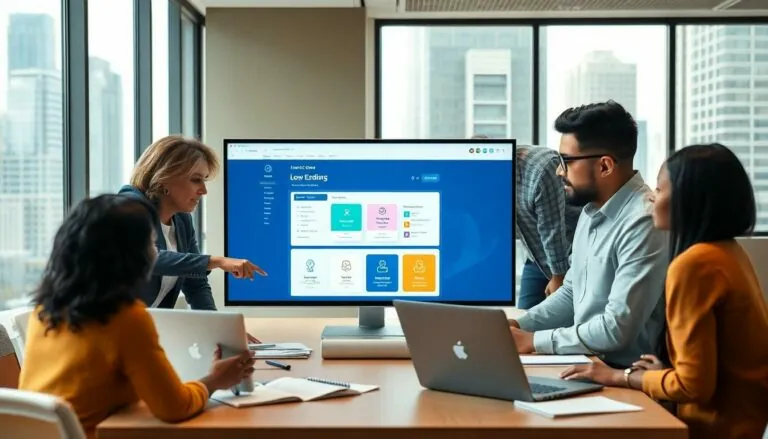Table of Contents
ToggleIn the world of computers, there’s a magical realm where users and hardware come together, and it’s called the operating system. Think of it as the friendly translator that helps your brain communicate with your machine. Without this interface, users would be left shouting into the void, hoping their wishes would somehow be understood by the cold, unfeeling circuits.
Understanding Operating Systems
Operating systems act as a vital interface for users interacting with computer hardware. In this role, they facilitate communication between end users and the physical components of computers, such as the CPU, memory, and storage devices. Effective translation of user commands into machine language happens through system calls, which are specific functions that access hardware resources.
User interfaces fall into two main categories: graphical user interfaces (GUIs) and command-line interfaces (CLIs). GUIs enable users to interact with the system through visual elements like windows, icons, and menus. In contrast, CLIs require text-based commands, allowing more direct control over the system for advanced users.
An operating system manages system resources efficiently. Task scheduling ensures that multiple applications can run without conflict, while memory management allocates RAM based on the needs of running programs. Without these critical functions, system reliability and performance would significantly decline.
Security features integrated into operating systems protect users from malicious software and unauthorized access. Access control, encryption, and user authentication are some strategies employed to ensure data integrity and confidentiality.
As users interact with applications, the operating system also ensures that hardware components communicate effectively with software. This seamless coordination is crucial for maintaining overall system performance and user satisfaction. Overall, operating systems play a pivotal role in enhancing the user experience by providing a streamlined and efficient interface with hardware.
The Role of Interfaces

Interfaces serve as the essential links between users and computer hardware in an operating system. They streamline communication and ensure efficient interaction with various system components.
User Interfaces Explained
Graphical user interfaces (GUIs) allow users to interact visually, utilizing elements like icons and windows. Users can perform actions using a mouse or touch gestures, making tasks intuitive. Command-line interfaces (CLIs) focus on text-based input, enabling users to execute commands directly. This method provides greater control and efficiency, particularly for power users.
Both types of interfaces cater to different user needs, enhancing accessibility and usability. GUIs tend to be more user-friendly, while CLIs offer speed and precision. Together, they form a complete user experience, crucial for effective interaction with an operating system.
Hardware Interfaces Explained
Hardware interfaces manage communication between the operating system and physical components such as the CPU, memory, and storage devices. Through system calls, the operating system translates user commands into actions recognized by hardware. This process involves the use of protocols, ensuring proper data transfer and execution of tasks.
Device drivers serve as intermediaries, translating operating system commands into instructions for hardware. Each device requires unique drivers for seamless operation. Effective hardware interfaces are critical to maintaining system performance and reliability, providing users with a smooth computing experience.
The Primary Interface
The primary interface acts as a bridge between users and computer hardware within an operating system. It facilitates seamless interaction, ensuring user commands translate effectively to machine actions.
Characteristics of the Primary Interface
Primary interfaces exhibit several key characteristics. First, they provide accessibility, allowing all users to interact with the operating system easily. Efficiency is another hallmark; commands execute quickly, enhancing user productivity. Intuitiveness ranks high, as interfaces present functions in an understandable format. Responsiveness is essential; interfaces adapt swiftly to user inputs, minimizing delays. Moreover, customization options allow users to modify settings to fit personal preferences, creating a tailored experience.
Examples of Primary Interfaces
Numerous primary interfaces exist across operating systems. Graphical User Interfaces (GUIs) represent the most common, featuring visual elements like icons and menus for easy navigation. Touch interfaces, prevalent in mobile devices, respond to finger gestures, enhancing interaction. Command-Line Interfaces (CLIs) serve power users, where text commands enable precise control over system functions. Application Programming Interfaces (APIs) allow software to communicate directly with hardware, streamlining operations. Additionally, voice interfaces emerge as growing alternatives, using voice recognition technology for hands-free control.
Importance of the Primary Interface
The primary interface plays a crucial role in user interaction with computer hardware. This interface greatly impacts usability and accessibility for users.
Enhancing User Experience
User experience improves significantly due to effective interfaces. Graphical user interfaces offer intuitive interaction, attracting users with visual elements. Command-line interfaces provide power users with precise control through text commands. Touch interfaces engage users through direct interaction, allowing gestures and multi-touch capabilities. Emerging voice interfaces add another layer of convenience, enabling hands-free operation. Customization options empower users to tailor their experience according to personal preferences. The combination of these interfaces creates a seamless and enjoyable user experience within operating systems.
Facilitating Hardware Communication
Effective communication between users and hardware relies on primary interfaces. Operating systems act as intermediaries, translating user actions into machine-readable instructions. Device drivers manage specific hardware functions, ensuring data transfer occurs smoothly. System calls enable the operating system to manage interactions with various hardware components, including CPU, memory, and storage. This relationship enhances performance and responsiveness, allowing users to execute tasks efficiently. Resource management processes, such as memory allocation, also benefit from this clear communication. Ultimately, seamless hardware interaction contributes to a stable and reliable computing environment.
The primary interface between users and computer hardware in an operating system is essential for a seamless computing experience. By facilitating communication through various interfaces like GUIs and CLIs, operating systems empower users to interact effectively with their devices. This interaction not only enhances usability but also ensures that users can harness the full potential of their hardware.
As technology continues to evolve, the diversity of interfaces will likely expand, offering even more ways for users to engage with their systems. Ultimately, a well-designed interface is crucial for maximizing efficiency and satisfaction in the digital landscape.






